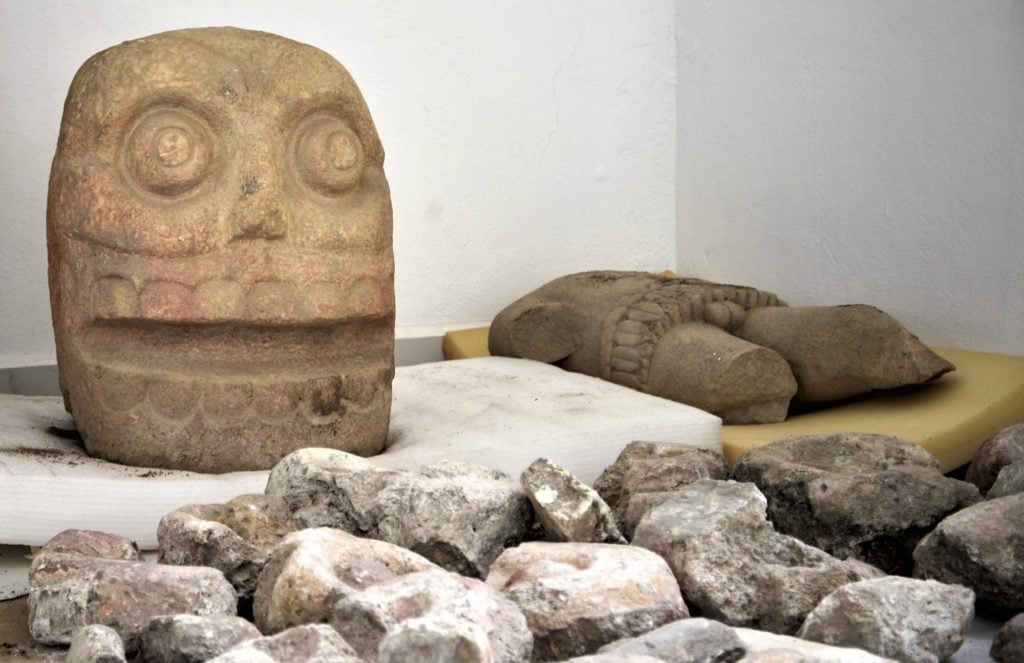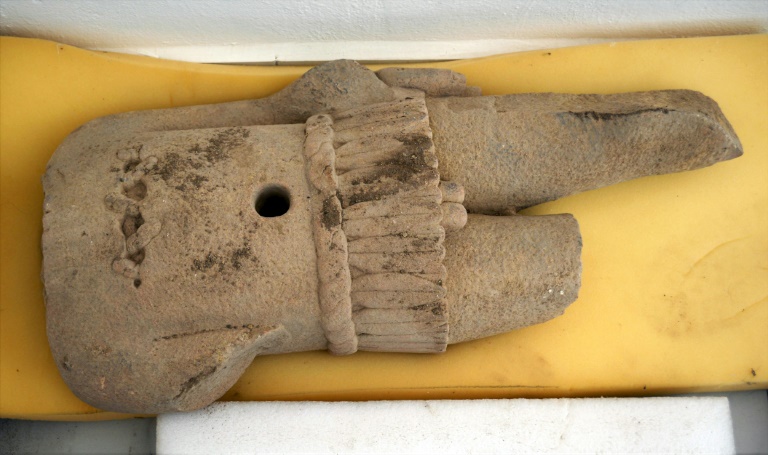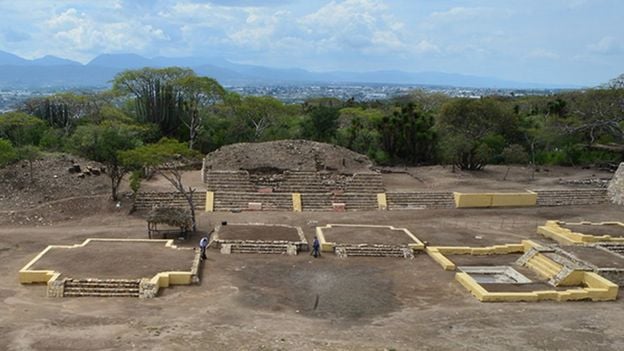Art World
Archaeologists Have Discovered an Ancient Temple in Mexico Where Priests Made Gruesome Sacrifices to the ‘Flayed Lord’
In a bloody ritual, priests flayed victims and wore their skins as a tribute to the god of renewal and rebirth.

In a bloody ritual, priests flayed victims and wore their skins as a tribute to the god of renewal and rebirth.

Sarah Cascone

Archaeologists in Mexico have discovered the first known site dedicated to Xipe Tótec, a pre-Hispanic fertility god known as the “Flayed Lord.”
Xipe is typically shown as a skinned human corpse, referencing the bloody ritual sacrifices made to the god by priests who flayed prisoners or slaves and wore their skins during religious ceremonies. The find, at the site of Ndachjian-Tehuacán in Puebla, was announced by Mexico’s National Institute of Anthropology and History, reports Smithsonian Magazine.
The ancient temple, which was used between around 1000–1260 AD, was built by the Popoloca, a people who were later conquered by the Aztecs, although Xipe was worshiped throughout Mesoamerica. During the festival of Tlacaxipehualiztli (a Náhuatl word for “put on the skin of the flayed”), priests would sacrifice victims as a symbol of regeneration.
The image of Xipe discovered at the site represents the god as a stone torso with an extra hand, which is believed to be a reference to the wearing of the flayed skin. Many of those flayed were killed during gladiatorial combat.

A stone trunk depicting the Flayed Lord, a pre-Hispanic fertility god often shown as a skinned human corpse has been excavated from the Ndachjian-Tehuacan archaeological site in Tehuacan, Puebla. The site is the first temple dedicated to the deity. Photo by Meliton Tapia Davila, courtesy of Mexico’s National Institute of Anthropology and History.
“Sculpturally it is a very beautiful piece,” said the project’s leading archaeologist, Noemí Castillo Tejero, in a statement cited by the BBC. “It… has a hole in the belly, which according to historical sources is where a green stone was placed to ‘bring it to life’ for ceremonies.”
“Finding the torso fragment of a human wearing the flayed skin of a sacrificial victim in situ is perhaps the most compelling evidence of the association of this practice and related deity to a particular temple,” University of Florida archaeologist Susan Gillespie, who not involved with the discovery, said to the Associated Press.

Mexico’s National Institute of Anthropology and History has discovered a temple dedicated to the Flayed Lord, a pre-Hispanic fertility god, at the Ndachjian–Tehuacan archaeological site in Tehuacan, Puebla state. Although depictions of the god, Xipe Tótec, had been found before in other cultures, a whole temple had never been discovered. Photo by Meliton Tapia Davila/National Institute of Anthropology and History.
The site also contains two massive stone skulls weighing over 400 pounds each and a pair of altars where the victims may have been killed and skinned. Archaeologists plan to study the sculptures and put them on view at the Ndachjian-Tehuacán museum, according to CNN.